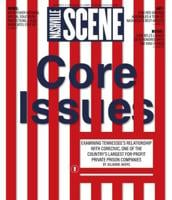The title of Daniel Lanois' new album Flesh and Machine — and the music contained within — could just as easily serve as a mission statement. Some record producers are known for their electronic studio wizardry, some for a more organic approach, but few have bridged the gap between human performance and technology as deliberately and effectively as Lanois.
Lanois is probably best known for his groundbreaking production on U2 albums such as The Unforgettable Fire, The Joshua Tree and Achtung Baby, but it's in his work with folk, country and roots-rock artists like Bob Dylan, Willie Nelson, Emmylou Harris and Neil Young that this musical yin-yang is most striking.
Dylan's 1997 album Time Out of Mind is a prime example. While the use of technology — most noticeably cavernous reverb — is relatively tame by Lanois standards, it still presented Dylan in a completely new light. Instead of being a gimmick or distraction, Lanois' subtle electronic manipulations enhance the emotional heft of Dylan's songs. And the album unquestionably revitalized Dylan's career, which had arguably stagnated over the preceding two decades.
Still, Dylan was a little unsure of the dramatic sonic recasting, and there was a bit of friction between the two men.
"We did have a couple of moments," Lanois tells the Scene from his L.A. studio. "But in the end, it won the Grammy for Best Album of the Year. All is forgiven, all is forgotten, and let's celebrate life and the future," he adds with a laugh.
Lanois strives for a similar balance between organic and electronic in his own music. Flesh and Machine's second track, "The End," is a testament to this paradigm. It features the type of otherworldly sonic mayhem you might expect to hear from an EDM icon like Skrillex. But instead of using the mechanical pulse of programmed drums, Lanois spotlights what is essentially a furious freeform jazz drum solo by his frequent collaborator Brian Blade, a world-class modern jazzer who's drummed for Joshua Redman, Wayne Shorter, Joni Mitchell and Brad Mehldau. Lanois sampled and processed Blade's drums and his own guitar to create perhaps the perfect soundtrack for a movie scene depicting an asteroid destroying planet Earth — a darkness and visceral urgency that would have been hard to create without real musicians playing instruments.
"The record is called Flesh and Machine, and it stands for that tightrope I've walked all my life," Lanois explains. "I have a responsibility here to embrace technology and embrace hand-played instruments. Authenticity, in the end, is what we want to get to. I'm quite proud of those moments, if I'm lucky enough to get that place where things still sound organic but there's obviously technology in there somewhere. I think it's very representative of where we're at culturally."
The intersection of humanity and technology is also evident in Lanois' use of the human voice. His friend Rocco DeLuca sings on several tracks, including album-opener "Rocco." And on "Opera," Lanois sampled his own voice. "Then," he says, "I created seven different pitches that I put on my multitrack, and played the console like a keyboard."
But while there is singing, there are no lyrics.
"I made an effort on this record for voices to live amongst the instruments," Lanois says. "That track 'Sioux Lookout' has moments in it where I swear it sounds like a whole village chanting from over the hill. Those are voices. They don't speak a lyric language, but they are a communication, and they will draw an emotion from people."
"Or I hope they will," he adds, laughing.
While that description may bring to mind cheesy New Age music, Flesh and Machine is more substantial and intriguing than that. Instead of Yanni, think instrumental passages from Meddle-era Pink Floyd, but refracted through a 21st century prism. Take, for instance, "Two Bushas," a particularly trippy and atmospheric number indicative of Lanois' creative approach.
"Those sounds were only meant to be hidden sonic details in the background of the song," he says, "but I took away the song, and made those details foreground. And it's quite beautiful, because it sounds like an orchestra, but you don't know what the instruments are. That's how I see the future."
So how, exactly, will Lanois re-create his lush soundscapes at City Winery Thursday, with Blade and bassist Jim Wilson in tow?
"I'm bringing what I'm calling a studio to the stage," he says. "I've kind of condensed my multitracks down to eight tracks. And I've convinced Brian Blade to play to metronomic time for these shows, which is a big breakthrough."
So one of the world's most respected timekeepers will be playing to a click track?
"Well, we don't use the term 'click track' around here, because I don't want to lose my friend," he says, joking seriously. "I said, 'Brian, I've got this really nice tabla box thing that I'd like you to be loyal to.' I used those words: 'loyal to.' "
Read the entire Scene interview with Lanois at nashvillecream.com.
Email music@nashvillescene.com.






